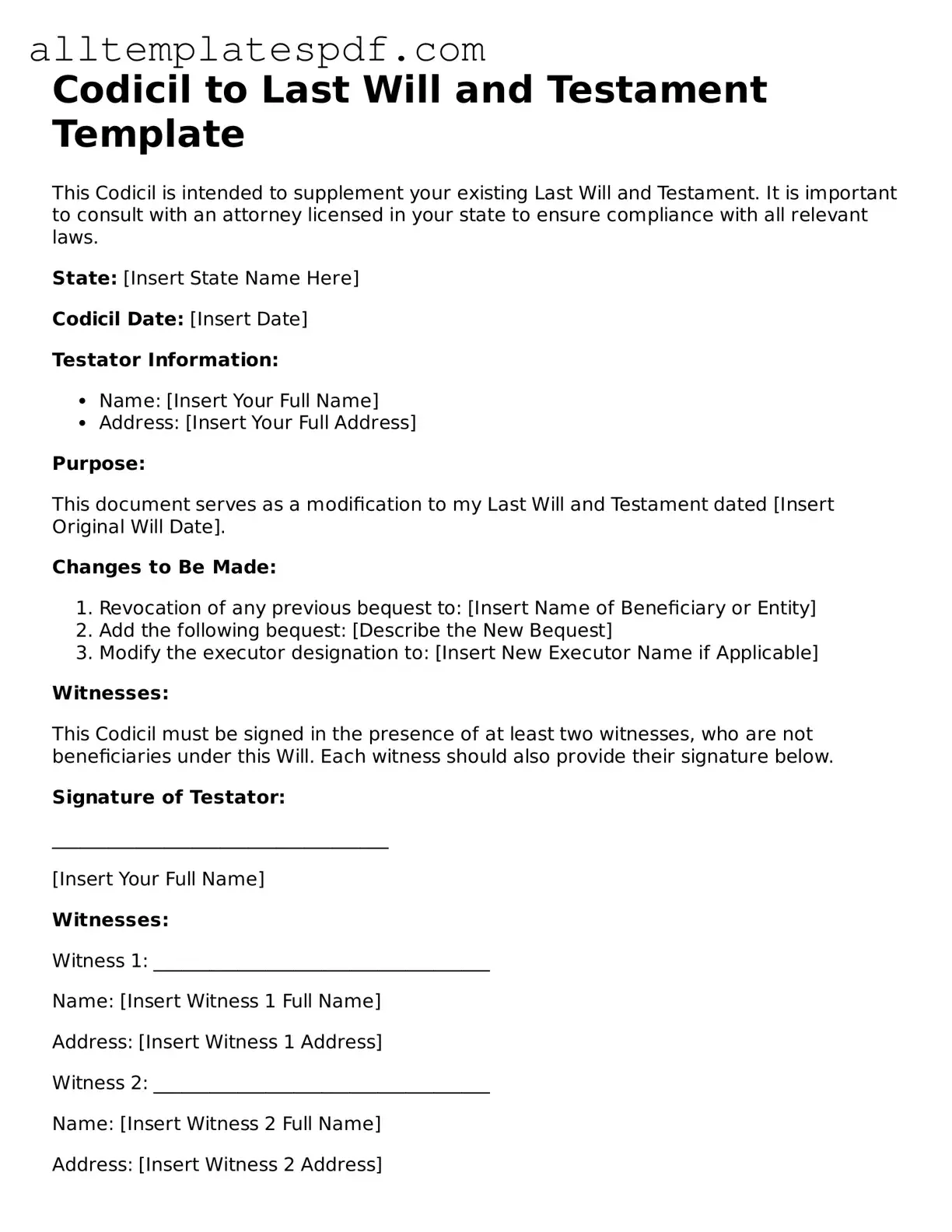Filling out a Codicil to a Will can be a straightforward process, but many people make mistakes that can lead to complications. One common error is failing to clearly identify the original Will. It’s essential to include the date of the original document and any relevant details to ensure clarity. Without this information, there may be confusion about which Will the Codicil is modifying.
Another frequent mistake is not properly signing the Codicil. Just like a Will, a Codicil must be signed in accordance with state laws. This typically requires the signature of the person making the changes and may also require witnesses. Omitting this step can render the Codicil invalid.
People often overlook the importance of being specific about the changes they want to make. Vague language can lead to misunderstandings and disputes among heirs. Clearly stating what is being added or changed in the Will is crucial for ensuring that your intentions are understood.
Additionally, some individuals forget to date the Codicil. A date is vital as it establishes the timeline of your wishes. Without a date, it may be challenging to determine the order of documents, which can lead to conflicts later on.
Another mistake is neglecting to revoke any previous Codicils. If you create a new Codicil but do not explicitly state that it revokes earlier versions, those earlier documents may still be considered valid. This can create confusion and conflict among beneficiaries.
People sometimes fail to keep the Codicil with the original Will. It’s important to store both documents together in a safe place. If the Codicil is lost or not found, the changes may not be honored, defeating the purpose of creating it.
Many individuals also do not seek legal advice when making significant changes. While a Codicil can be a simple solution, consulting with a legal professional can provide clarity and ensure that all legal requirements are met. This step can prevent potential issues down the line.
Lastly, some people underestimate the importance of communicating their intentions to their loved ones. Discussing changes with family members can help prevent misunderstandings and disputes after your passing. Open communication can ease tensions and ensure that your wishes are respected.
